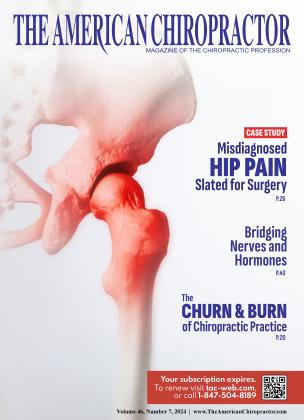Elevating Sports Performance through Mechanical Motion Therapy (MMT)
by Moe Pisciottano, DC
In the competitive realm of sports, performance enhancement is a constant pursuit. Amidst this quest, the integration of mechanical motion therapy (MMT) and multi-impulse mechanical stimulation (MIMS) emerges as a groundbreaking strategy, offering unparalleled benefits for athletes.
Musculoskeletal ailments pose a significant hurdle to athletic excellence, impacting millions of individuals and imposing substantial economic burdens. The staggering prevalence of these conditions underscores the urgency for innovative treatment modalities. By aligning with the natural frequencies of treated tissues, MIMS devices deliver precise stimuli, triggering a cascade of physiological responses crucial for optimal performance.
Athletic prowess hinges on the delicate interplay between hard and soft tissues. With its multifaceted approach encompassing active release, positional release, myofascial release, and proprioceptive neuromuscular facilitation, MMT addresses the intricacies of musculoskeletal disorders. By reeducating dysfunctional neuromuscular relationships, MMT restores healthy mechanoreceptor and proprioceptor feedback mechanisms that are pivotal for athletic agility and coordination.
The synergy between MMT and MIMS offers a holistic solution, targeting pain reduction, fibrosis alleviation, inflammation reduction, and enhanced tissue oxygenation. These benefits translate into tangible improvements in muscle strength, flexibility, range of motion, and endurance — cornerstones of athletic performance.
Moreover, the evidence-based efficacy of MMT and MIMS presents a paradigm shift in sports injury management. Compared to conventional approaches, this innovative combination promises shorter recovery times, enhanced athletic longevity, and cost-effectiveness, aligning with the demands of modern sports medicine.
In conclusion, the amalgamation of MMT and MIMS heralds a new era in sports performance enhancement. By addressing the root causes of musculoskeletal dysfunction and promoting optimal tissue function, this synergistic approach empowers athletes to surpass their limits and achieve peak performance levels.
Dr. Moe Pisciottano is the CEO of the ProAdjuster Group and has been a practicing chiropractor in Pittsburgh, Pennsylvania, for 35 years. Dr. Pisciottano is the first and only chiropractor to receive the coveted Ernst and Young Entrepreneur of the Year award. To learn more, visit www.learnproadjuster.com
References
1. United States Bone and Joint Initiative. The Burden of Musculoskeletal Diseases in the United States (BMUS), Third Edition [Internet]. Rosemont, IL: United States Bone and Joint Initiative; 2014 [cited 2024 May]. Available from: http://www.boneandjointburden.org.
2. CDC National Health Center Statistics. National Health Interview Survey (NHIS) Adult sample [Internet]. Atlanta, GA: U.S. Centers for Disease Control and Prevention; 2012 [cited 2024 May]. Available from: www.cdc.gov/nchs/nhis/nhis_2012_data_release.html.
3. Wong CK. Strain counterstrain: current concepts and clinical evidence. Man Ther. 2012 Feb;17(1):2-8. doi: 10.1016/j.math.2011.10.001. Epub 2011 Oct 24. PMID: 22030379.
 View Full Issue
View Full Issue






